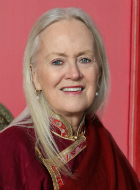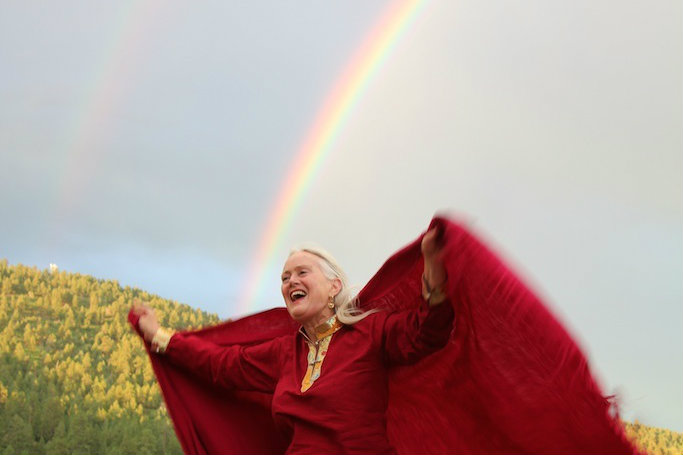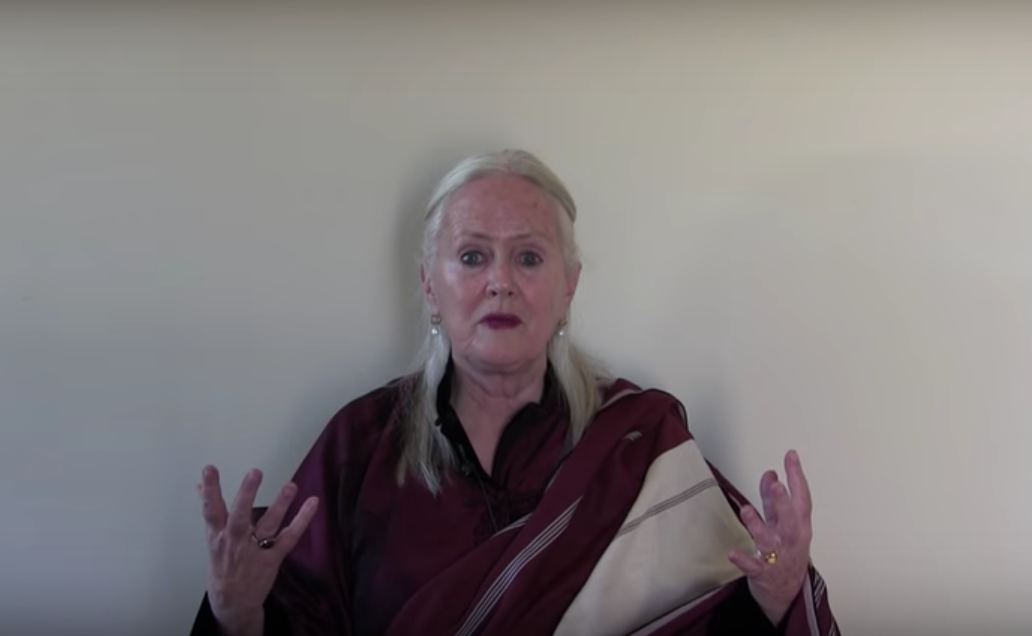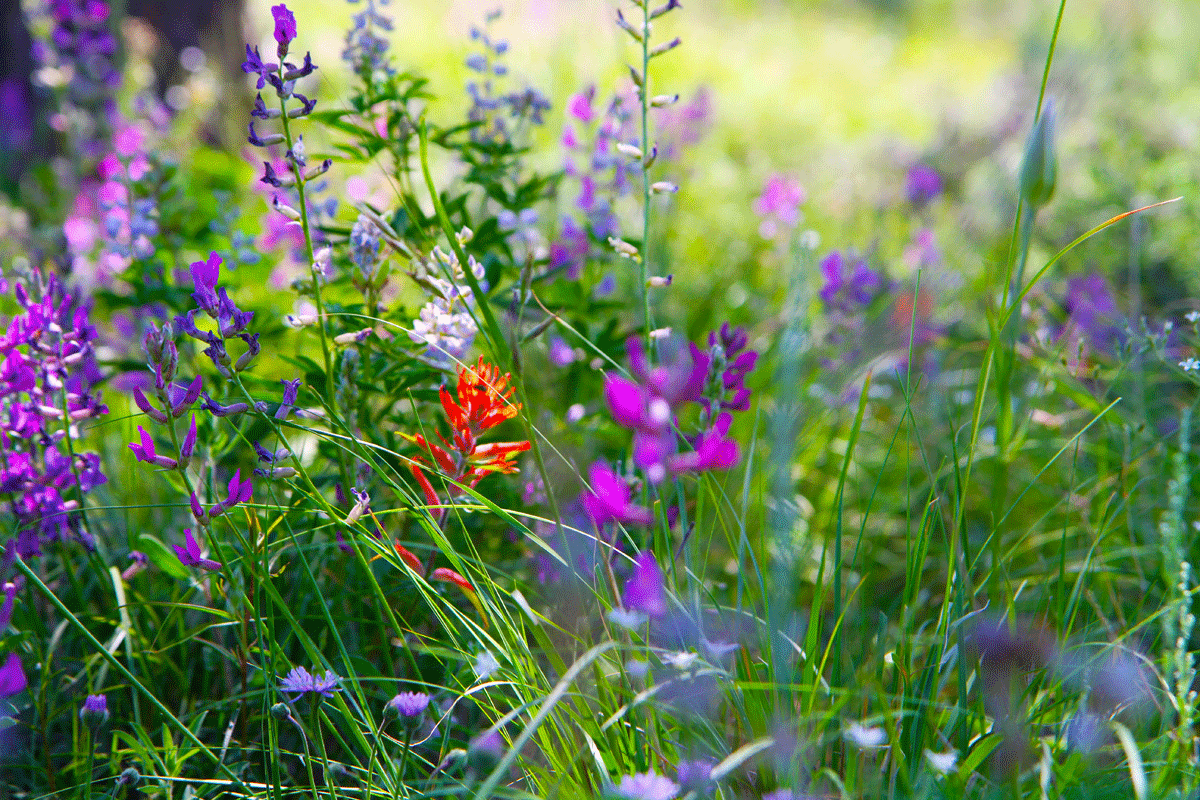Wisdom Rising: Fierce Dakini Power
By Lama Tsultrim Allione //
The Sanskrit word dakini in Tibetan becomes khandro, which means “sky dancer,” literally “she who moves through space.” The dakini is the most important manifestation of the feminine in Tibetan Buddhist teaching. The dakini is a messenger of spaciousness and a force of truth, presiding over the funeral of self-deception. Wherever we cling, she cuts; whatever we think we can hide, even from ourselves, she reveals. The dakini traditionally appears during transitions: moments between worlds, between life and death, in visions between sleep and waking, in cemeteries and charnel grounds.
Observing my two daughters’ four labors, which produced four marvelous grandchildren, two for each daughter and remembering my own three labors, I think of the dakini in the time called “transition” during childbirth, when the cervix must open the last few centimeters for the baby’s descent into the birth canal. Transition is generally the most painful and most challenging period during labor, and during this time the woman must touch her wildness, take charge, and enter her deepest primal power. She often becomes fierce and must access the powerful dakini within, in order to move through transition, the tunnel of darkness, and bring her baby into the light. No one else can do it for her.
I remember during my first labor, witnessing the potency of the dakini unleashed and in her full power. It was only months after coming back from India with my husband, and less than a year since I’d disrobed from being a Buddhist nun. Living on Vashon Island in Puget Sound off the coast of Seattle, I chose to have a natural birth at home. We were living in a small berry-picker’s cottage, which had housed migrant workers harvesting currants on the island. Our heat and cooking came from a small woodstove.
When the day came, I went into labor in the morning, and right away it was intense. By evening, I had been in hard labor for eight hours when the doctor arrived from Seattle. My labor wasn’t progressing, and he thought the baby’s head was in the wrong position. Suddenly I thought: I have to get this baby out! It’s up to me, no one else can do this. What do I need to do?
I tuned in to my body, got off the bed and onto the floor on my hands and knees, and told the doctor to leave me. I began weaving and shaking back and forth, up and down. My husband tried to approach to tell me to be calm and breathe quietly, but I told everyone to get out of the way. I wasn’t nice or calm; I was fierce and clear. I was like a primal animal: sweating, shaking, and moaning, swaying back and forth wildly.
The labor began to move forward. I got wilder as I entered transition, my body shaking while still on all fours. And before long, I held my newborn daughter in my arms. Had I done what I was told, I would not have turned her position; it was all the wild movement on all fours that helped to shift her. Had I not taken it on, becoming fierce and clear and guiding myself from within, I might have had to be airlifted to a hospital in Seattle for a cesarean section.
The way I am using the word fierce is in the sense of how a mother animal defends her young – a laser beam of fierceness, of pure energy that when harnessed and directed is powerful and unstoppable. It is fierceness without hatred or aggression. Sometimes a wrathful manifestation is more effective than a peaceful approach.
I was once at a lunch with the Dalai Lama and five other Western Buddhist teachers at Spirit Rock Meditation Center in Marin County, California. We were sitting in a charming room with white carpets and many windows. The food was a delightful, fragrant, vegetarian Indian meal. There were lovely flower arrangements on the table and gentle, graceful students serving the meal. We were discussing sexual misconduct among Western Buddhist teachers. A woman Buddhist from California brought up someone who was using his students for his own sexual needs.
One woman said, “We are working with him with compassion, trying to get him to understand his motives for exploiting female students and to help him change his actions.”
The Dalai Lama slammed his fist on the table, saying loudly, “Compassion is fine, but it has to stop! And those doing it should be exposed!”
All the serving plates on the table jumped, the water glasses tipped precariously, and I almost choked on the bite of saffron rice in my mouth. Suddenly I saw him as a fierce manifestation of compassion and realized that this clarity did not mean that the Dalai Lama had moved away from compassion. Rather, he was bringing compassion and manifesting it as decisive fierceness.
It is by understanding the dakini’s fierceness as a productive and creative source of raw energy that we see the dakinis in action wielding – the power to subdue, protect, and transform. We must find the sources to access this fierce dakini power and bring it to bear on what matters to us in our lives, be it emotional, spiritual, intellectual, or political. Meeting our strong feminine energy, we will develop as women, and not as women trying to be like men or asexual beings. We are different, and until that difference is known, owned, and maximized, our true feminine potency and capacity to bring this world into balance will not be realized. The powerful, fierce feminine is very much a part of the psyche, but it is repressed; and when it is not acknowledged because it is threatening, it can become subversive and vengeful. But when it is acknowledged and honored, it’s an incredible source of power.
About the Author




